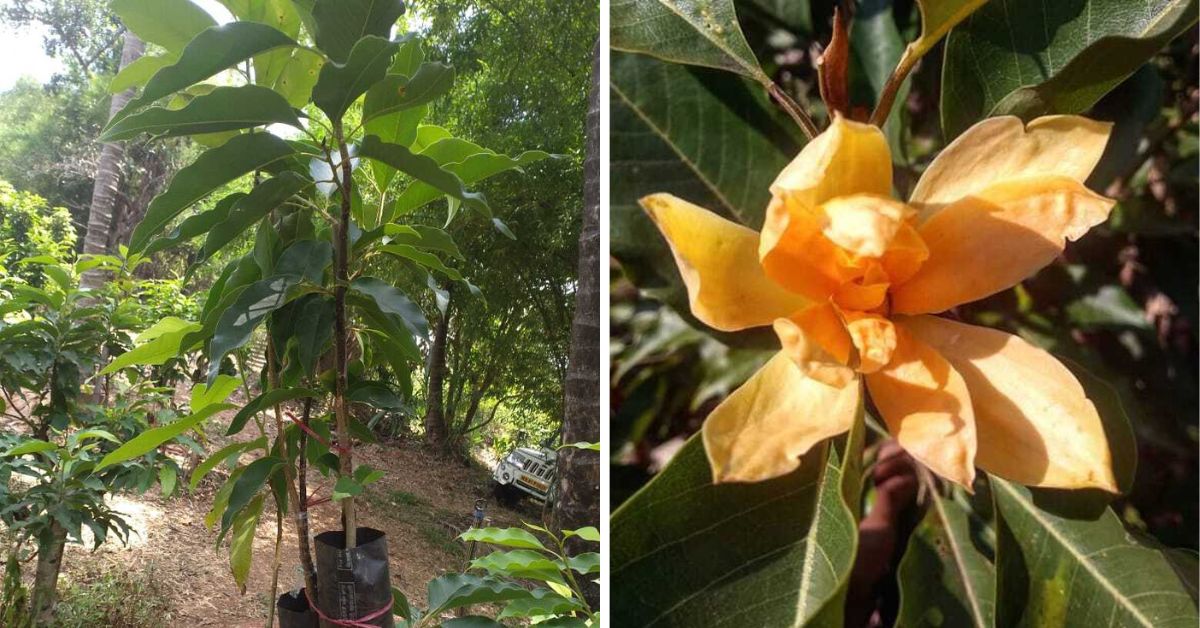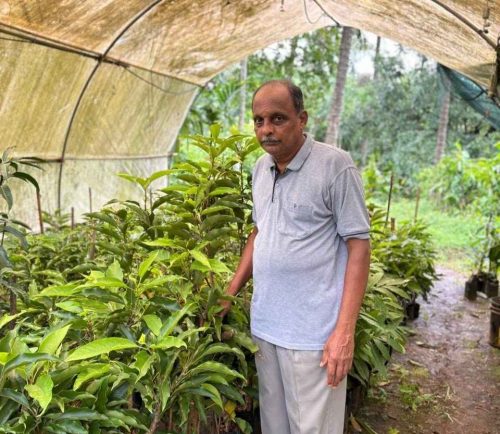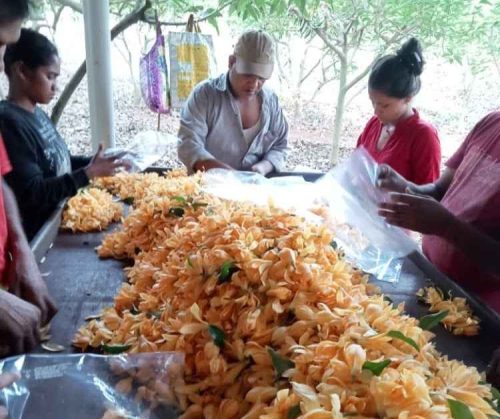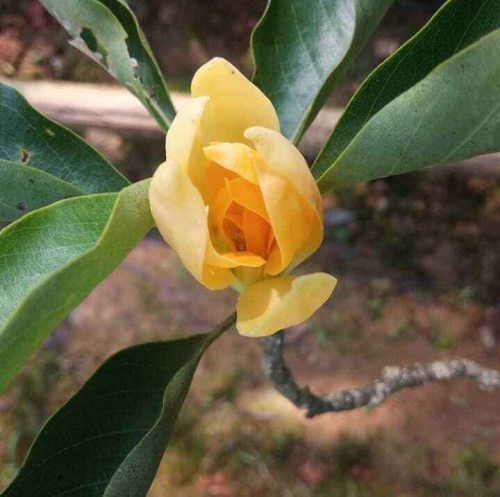In Mumbai’s bustling flower markets, the golden-yellow Sonchafa reigns supreme — its scent lingering in temples, homes, and wedding halls. But behind this perennial marvel lies a quiet revolution from the red soils of Vetal-Bambarde, Sindhudurg, led by Uday Gopinath Velankar.
The bloom that never sleeps
Sonchafa or Sonchampa (Magnolia champaca) has seven known varieties — saffron, pale yellow, bright yellow, pure white, and dense yellow among them. None bloom year-round.
Velankar chose to focus on the dense yellow type. By grafting it onto the mother plant, he developed the Velankar Chafa, now a well-recognised cultivar. It begins flowering in its second year and continues for 35–40 years. In contrast, seed-grown plants may take up to 12 years to bloom. A one-year-old grafted plant sells for Rs 150.

Sonchafa begins as a shrub, growing eight to 10 feet before becoming a climbing vine. Its greenish-yellow flowers are intensely fragrant and last for days in water. The plant thrives in most soil types and requires minimal care, except in waterlogged areas.
To promote it, Velankar travelled across Maharashtra — from Palghar to Aurangabad — carrying saplings, guiding farmers. Today, Velankar Sonchafa is a brand, and the grafted variety a grower’s dream.
On his 20-acre nursery, 3,000 mother plants produce about 10,000 grafts annually. Visit during Shravan, and you’ll see saplings in black nursery bags, flowers tucked into rain-soaked leaves, scenting the air.
A festival favourite
In Dadar’s flower market, Sonchafa usually sells for Rs 100 per 100 flowers, but during Ganesh Chaturthi, it can fetch up to Rs 700. Demand spikes again during weddings and Navratri.

Velankar’s innovation — a Sonchafa that flowers all year — has transformed livelihoods. Unlike the monsoon-only bloomers, Velankar Chafa is harvested almost daily, sustaining growers across Vasai, Virar, Pune, Nashik and even South India.
Once a region known for mogra, the Vasai-Virar belt has now pivoted to Sonchafa, drawn by better returns and consistent demand.
From one shrub to a movement
In the 1980s, many floriculturists in the region were growing mogra, betel leaf or velchi bananas. But shifts in climate, disease and market preferences pushed them to explore other options.
Kiran Patil of Arnala village recalls how his grandfather Moreshwar Bhoir planted the first Sonchafa in the village. Today, Patil heads the 1,100-member Arnala Farmers’ Cooperative Society, where Sonchafa is the mainstay.

A single shrub can yield 150–200 flowers a day. On one acre, farmer Bhatte of Satpale village harvested 11,000 flowers daily in peak season, earning up to Rs 9 lakh a year post-expenses. However, erratic weather has halved his output, pushing him to consider crops like jackfruit or turf grass.
“Still, nothing gives better returns than Sonchafa,” he says. “A few acres can earn more than sugarcane or vineyards.”
Climate, care & changing times
Horticulturist Lahanu Gabhale from Palghar’s Agricultural Research Station notes that Sonchafa needs 10 hours of light daily. Prolonged cloudy weather and high humidity have led to fungal infections and dormancy, particularly in September.
He advises farmers to prune frequently, split fertiliser doses into four annual applications, and act on weather advisories.

Farmer Robert D’Britto, once a mogra cultivator, shifted to Sonchafa after pest outbreaks in the late ’90s. Today, he mentors nearly 500 families and is a recipient of the Vasantrao Naik Agriculture Award (2012).
Brand at risk
Velankar and his son Onkar now sell 7,000–8,000 saplings annually, with buyers in Maharashtra, MP, Kerala, Karnataka, Tamil Nadu, and Telangana — most during June–July. They’ve begun selling to retail customers via their website.

But growing popularity has led to counterfeit claims. Velankar warns: “You won’t find genuine Velankar Chafa in regular nurseries, though many say otherwise.”
A fragrant future
This story is about more than a flower. It’s about a community’s shift from subsistence farming to floriculture, about cultural identity rooted in tradition, and about how a single innovation can transform hundreds of rural lives.
As Velankar Chafa spreads across India, formal recognition and IP protection could ensure its legacy — a legacy that began with one farmer and a single flowering vine.
No comments:
Post a Comment